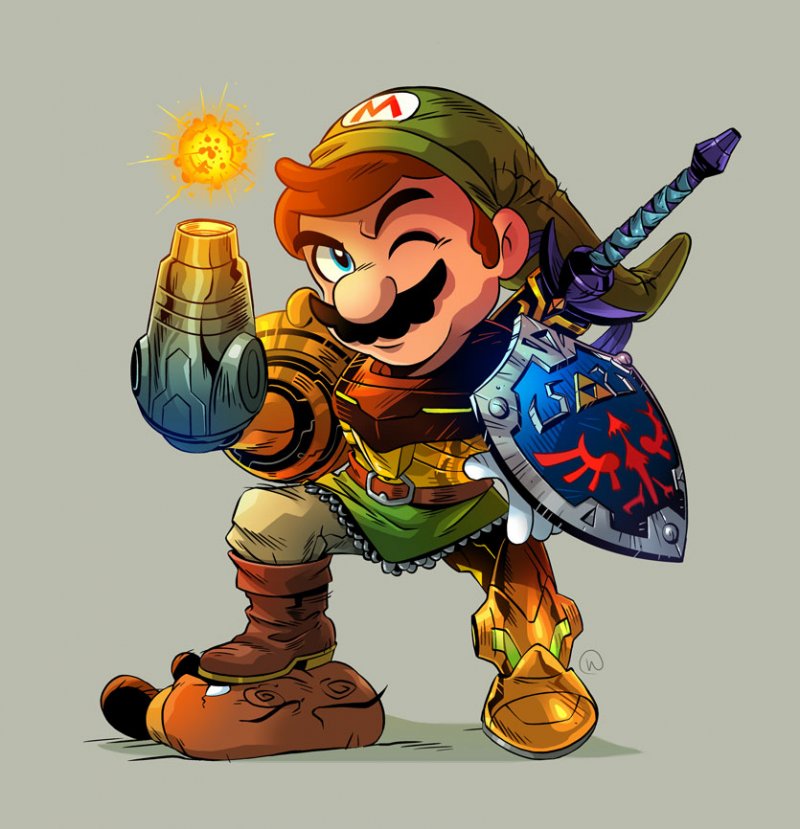

One would expect bosses to be the best display of Zelda II ’s combat, but that honor belongs to the many Iron Knuckles sprinkled throughout the game. These moments can be stressful, and at times overwhelming, but they’re used to help players hone their skills. Such a situation inevitably hands the player with three core tasks: dodge by jumping, block by positioning Link so his shield will take out projectiles or enemy attacks, and take out whatever is blocking the way. There are several screens where projectiles fire at Link while he’s expected to fight an enemy at close range. Combat is inherently skill-based to the point where fast reflexes will be the difference between life and death in the last few Palaces. Zelda II ’s battle scenes shine most when putting players into situations where enemies are coming from all sides. Having a natural jump also adds in a layer of verticality to combat where Link will occasionally be tasked with weaving up and down to either do damage or avoid it. The controls are responsive enough where Link can reliably get out of danger the moment he’s confronted with it. Link’s short sword jab requires him to get relatively close to enemies for his hits to connect, but how he moves effectively makes this a non-issue. There’s a fluidity to Link’s movement that gives combat a smooth flow when maneuvering in and out of attacking. When sitting down and actually taking a long look at the core gameplay, though, it becomes abundantly clear just how close to greatness The Adventure of Link actually was.Īs far as action RPGs go, Zelda II might genuinely be the best the NES has to offer, at least from a mechanical perspective.

Tossing in how convoluted and out of the way some are to obtain, Zelda II naturally develops a stigma for itself where its best element ends up obscured by its worst.

#Link it up game upgrade#
It’s easy to get lost or outright blocked in the second half since just about every single upgrade Link can get is required to complete the game. The Adventure of Link is a game that suffers immensely from a ridiculous difficulty curve and an awkward sense of progression. It’s not hard to overlook just how solid Zelda II ’s combat is, all things considered. As warranted as Zelda II ’s legacy is, however, it is nonetheless worth remembering that “black sheep” does not equate to “bad.” While Zelda II: The Adventure of Link is undeniably a disappointing sequel coming off the heels of The Legend of Zelda, it’s not without one key aspect it can lord over its predecessor: the combat. Were it not for the music and general aesthetic of the game, The Adventure of Link would be totally unrecognizable as a proper entry in The Legend of Zelda series. It’s a sidescroller, features virtually no puzzles, and places a heavy emphasis on combat. No one can, or should deny that Zelda II: The Adventure of Link ’s status as the franchise’s black sheep is anything less than well deserved.


 0 kommentar(er)
0 kommentar(er)
